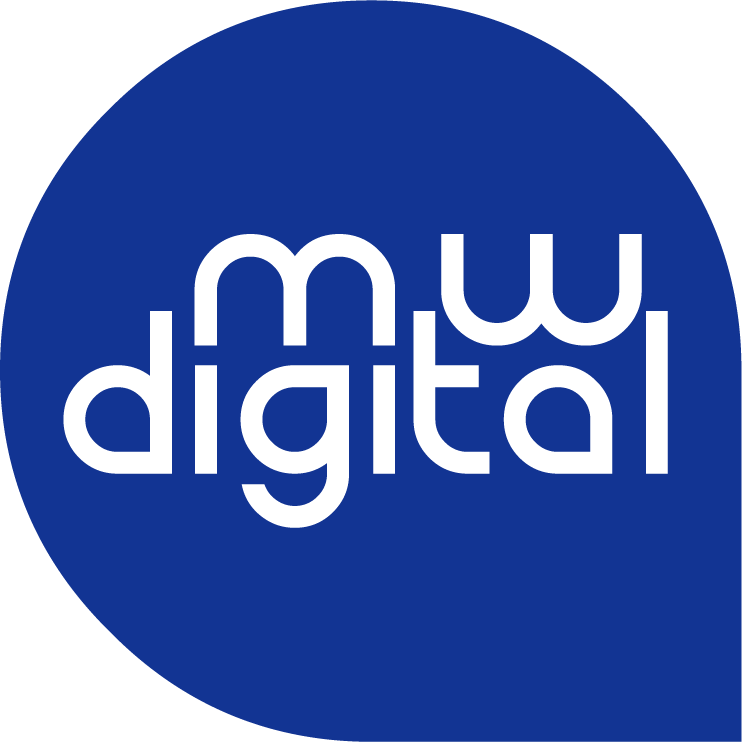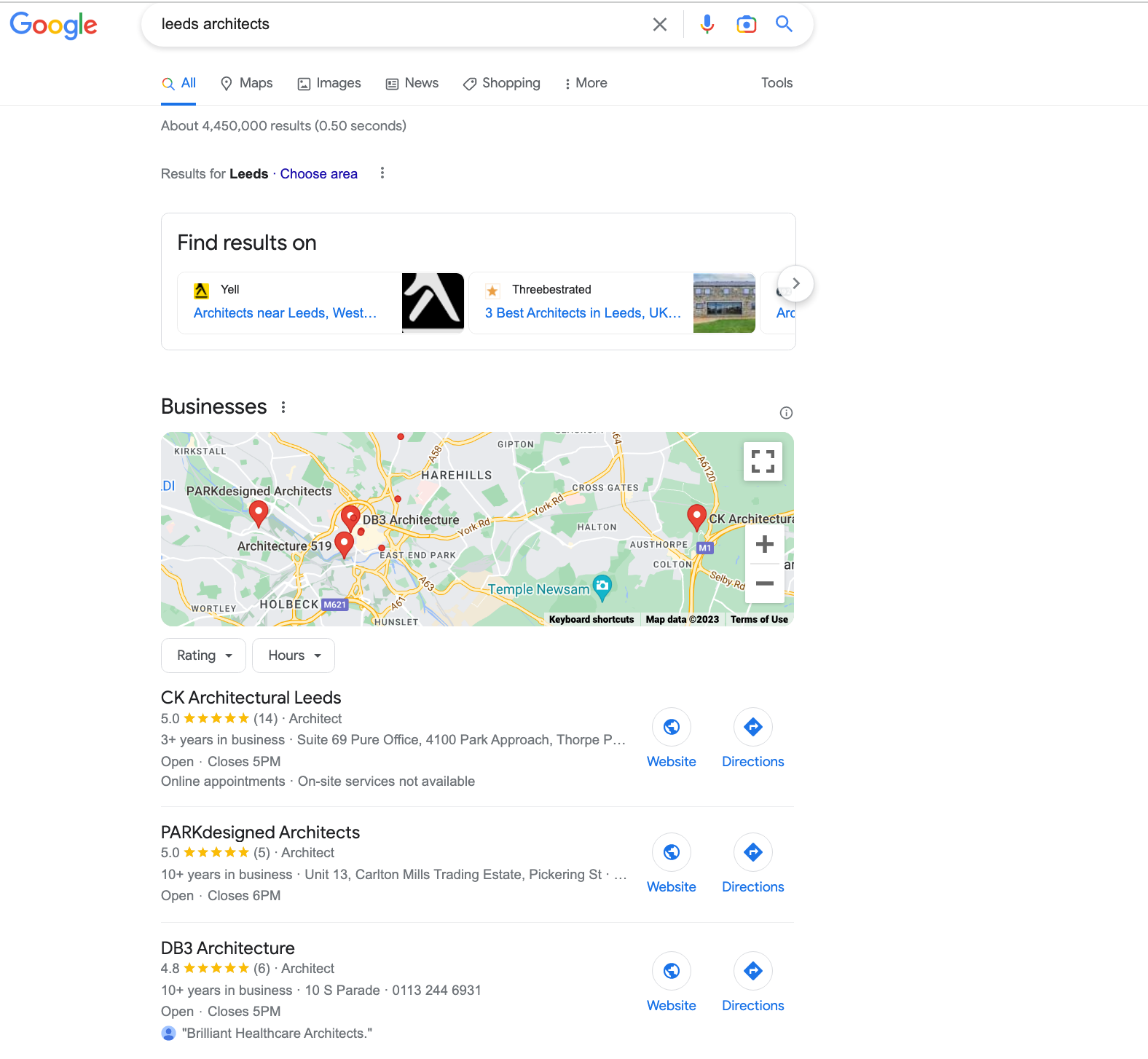What are the 4 types of SEO? We share 40 tips to fully understand what is required in an SEO Strategy.
Search Engine Optimisation needn't be complicated. There is a lot involved in SEO, but let's break it down into the 4 main types of SEO and what goes into each of them for an SEO Strategy.

The 4 types of SEO are:
- On-page SEO
- Off-page SEO
- Technical SEO
- Local SEO
Let's take each in turn and focus on the top 10 things to do for each.
On-Page SEO
On-page SEO refers to the optimization of individual web pages to improve their visibility and rankings in search engine results pages (SERPs). It involves optimizing various on-page elements and factors that influence how search engines perceive and rank a webpage.
Here are some key components of on-page SEO:
1. Keyword Optimization: Conducting thorough keyword research and strategically incorporating relevant keywords into page titles, headings, meta descriptions, and throughout the content. This helps search engines understand the topic and relevance of the page.
2. Title Tags: Crafting unique, descriptive, and keyword-rich title tags for each webpage. The title tag is displayed as the clickable headline in search engine results and should accurately represent the content of the page.
3. Meta Descriptions: Creating compelling and concise meta descriptions that summarize the page's content. While meta descriptions do not directly impact rankings, they influence click-through rates as they appear below the title tag in search results.
4. URL Structure: Using clean and readable URLs that include relevant keywords and provide a clear indication of the page's content. A well-structured URL helps both search engines and users understand the page's topic.
5. Headings and Sub-heading optimisation: You should only have one h1 tag per page, and this should be optimised to the keyword that page is targeting. Then the use of sub-headings (the h2, 3, 4 etc tags) should be used to organise your content. This makes it easier for the user to understand, as well as being good practive.
6. Content Optimization: Content, content, content. The key to ranking is creating relevant content for your target audience. Optimizing the content includes using relevant keywords naturally, incorporating multimedia (images, videos), ensuring proper formatting (paragraphs, bullet points), and providing valuable information to the users.
7. Internal Linking: Linking relevant pages within a website to improve navigation and help search engines discover and understand the site's structure. Internal links distribute authority and relevance throughout the website, enhancing the ranking potential of interconnected pages.
8. Image Optimization: Optimizing images by using descriptive filenames, adding alt text (alternative text), and compressing the file size. This helps search engines understand the image content and improves the page's load speed.
9. User Experience (UX): Enhancing the overall user experience by ensuring fast page load times, mobile responsiveness, easy navigation, and clear calls to action. A positive user experience leads to higher engagement, longer time on site, and increased chances of conversions.
10. Fixing broken links. Why is it essential to fix broken links?
Broken links lead users from one web page to another that doesn't exist. Multiple broken links negatively affect user experience and may worsen your search engine rankings, because crawlers may assume that your website is poorly maintained or coded. This means that broken links can cause downfalls in SEO keyword rankings.
By optimizing these on-page elements, businesses can improve the relevancy, visibility, and overall ranking potential of their web pages. On-page SEO ensures that search engines can effectively crawl, understand, and present the webpage to users based on their search queries. However, it's important to note that on-page SEO should always prioritize the user's experience and intent, providing valuable and informative content that satisfies their needs.

Off-Page SEO
Off-page SEO refers to the optimization activities conducted outside of a website to improve its visibility and rankings in search engine results pages (SERPs). Unlike on-page SEO, which focuses on optimizing the elements within a website, off-page SEO involves building external signals and reputation factors that influence a website's authority, trustworthiness, and relevance.
Here are some key components of off-page SEO:
1. Link Building: One of the primary off-page SEO techniques is link building, which involves acquiring high-quality backlinks from other websites to your own. Backlinks act as "votes" for your website's authority and can significantly impact search engine rankings. The quality, relevance, and diversity of backlinks are crucial in determining their effectiveness.
2. Social Media Marketing: Sharing your content on your social media channels might seem obvious - and it is! It is an important part of any SEO strategy as engagement on SM means more traffic, and potential more people visiting your site and engaging with your brand.
3. Online Directories and Citations: Business directories, such as Yell, Bing and loads more are a good place to publicise your business. They also provide high-authority backlinks to your business. In essence, it helps search engines verify the legitimacy and consistency of your business information across the web.
4. Influencer Outreach: Collaborating with influencers and industry experts can amplify your brand's reach, attract new audiences, and earn valuable backlinks. Engaging with influencers through guest blogging, interviews, or co-marketing campaigns can generate exposure and increase your website's authority.
5. Brand Mentions and PR: Building brand awareness and generating positive mentions across the web can indirectly impact SEO. When reputable websites and media outlets mention or feature your brand, it enhances your online reputation and can lead to natural backlinks.
6. Online Reviews and Reputation Management: Encouraging and managing online reviews on platforms like Google My Business, Yelp, and industry-specific review sites can contribute to your online reputation. Positive reviews improve customer trust and may indirectly influence search engine rankings.
7. Social Bookmarking: Share your content on social bookmarking websites like Reddit, Digg, and Tumblr can increase visibility and drive traffic to your site. You can build your brand, and create further links to your website.
8. Guest Blogging: Writing and publishing high-quality articles on relevant and authoritative websites within your industry can help establish your expertise, increase brand visibility, and earn valuable backlinks.
9. Forum Participation: Actively participating in online forums and communities related to your industry allows you to engage with potential customers, share knowledge, and build your brand's authority. It's important to provide helpful and informative responses while adhering to forum guidelines.
10. Local SEO: For businesses targeting local customers, optimizing for local SEO is crucial. This involves creating and optimizing your Google My Business profile, obtaining local citations, and garnering positive reviews from satisfied customers.
It's worth noting that off-page SEO is not solely focused on manipulating search engine rankings. It is also about building your brand, and developing a loyal following of engaged (potential) customers.

Technical SEO
Technical SEO is the optimization of the technical elements of a website to improve its search engine visibility and performance. Technical SEO focuses on the infrastructure and technical behind-the-scene parts of a website.
Here are some key components of technical SEO:
1. Website Speed and Performance: Search engines prioritize websites that offer a fast and seamless user experience. Optimizing website speed involves minimizing page load times, compressing images, leveraging browser caching, and using content delivery networks (CDNs) to deliver content efficiently.
2. Mobile-Friendliness: With the increasing use of mobile devices, search engines prioritize mobile-friendly websites. It involves ensuring that a website is responsive and displays properly on various screen sizes. Mobile-friendly sites improve user experience and rankings in mobile search results.
3. Website Crawling and Indexing: Search engines use crawlers to discover and index web pages. Technical SEO ensures that search engine crawlers can easily access and crawl the website. It involves creating a clear site structure, optimizing URL structure, using XML sitemaps, and implementing robots.txt files to guide search engine crawlers.
4. Website Architecture and Structure: A well-organized website structure makes it easier for search engines and users to navigate and understand the content. It involves using logical navigation menus, implementing breadcrumb trails, and creating a hierarchical structure with proper internal linking.
5. Canonicalization: Duplicate content can negatively impact search engine rankings. Canonicalization involves specifying the preferred version of a web page to avoid duplicate content issues. It helps search engines understand which version to index and display in search results.
6. SSL Certificate and Website Security: If your site does not have SSL get it sorted today! Search engines penalise unprotected sites as they try to protect users.
7. Structured Data Markup: Such as Schema code provide search engines with additional context about the content on a web page. It helps search engines understand the content and display rich snippets in search results, such as star ratings, product details, and event information.
8. XML Sitemaps: XML sitemaps provide search engines with a roadmap of all the important pages on a website. It helps search engines discover and index web pages efficiently. XML sitemaps should be regularly updated and submitted to search engines.
9. Website Accessibility: Optimizing website accessibility ensures that people with disabilities can access and navigate the site. It involves using descriptive alt text for images, providing text alternatives for non-text content, and implementing proper heading structures for easy screen reader navigation.
10. Website Analytics and Tracking: Implementing website analytics tools, such as Google Analytics, enables tracking and analysis of important metrics like website traffic, user behavior, and conversion rates. Analyzing these data helps in optimizing the website further and making informed decisions.
Technical SEO plays a crucial role in ensuring that search engines can efficiently crawl, index, and understand a website.

Local SEO
Local search engine optimization is the process of optimising a website to improve visibility in local or regional search results. If your business only covers a specific area, then local SEO is what you need to focus on. Achieving good local search results, and listings in maps is the goal.
Here are some key components of local SEO:
1. Google Business Porfiles (formerly Google My Business (GMB)) Optimization: Creating and optimizing a GBP profile is crucial for local SEO. It involves providing accurate and up-to-date information about your business, such as name, address, phone number (NAP), website, hours of operation, and business categories. Optimising your GBP listing increases your chances of appearing in the local pack (the map section) and local organic search results.
2. Local Keyword Research: Identifying relevant local keywords is vital for optimising your website's content. These keywords are typically geo-specific and include location names or other location-specific terms. Understanding the local search terms used by your target audience allows you to tailor your content and optimise your website accordingly.
3. Location-Specific Landing Pages: Creating location-specific landing pages on your website helps target different areas you serve. These pages should include localized content, such as information about the specific location, testimonials from local customers, and service area details. Optimizing these pages with relevant keywords and location-specific metadata enhances their visibility in local search results.
4. NAP Consistency: Ensuring consistent and accurate NAP information across your website, GMB profile, and other online directories is crucial. Consistency in your business name, address, and phone number helps search engines verify your business details and improves your local SEO efforts. Inaccurate or inconsistent information can negatively impact your rankings and confuse potential customers.
5. Online Directories and Citations: Listing your business in online directories and citation websites can help improve your local SEO. These directories include platforms like Yelp, Yellow Pages, Bing Places, and industry-specific directories. Ensuring your NAP information is consistent across these directories can enhance your online visibility and increase the chances of appearing in local search results.
6. Online Reviews and Ratings: Encouraging and managing online reviews from customers can significantly impact your local SEO efforts. Positive reviews not only enhance your online reputation but also influence potential customers' decision-making. Encourage customers to leave reviews on platforms like Google, Yelp, and industry-specific review sites. Responding to reviews, whether positive or negative, shows that you value customer feedback and engagement.
7. Local Citations: Obtaining local citations, which are mentions of your business name, address, and phone number on other websites, helps improve your local SEO. These citations can be in the form of directory listings, blog mentions, or local news articles. The consistency and quality of these citations contribute to your local search visibility.
8. Mobile Optimization: Optimizing your website for mobile devices is crucial for local SEO since many local searches are performed on smartphones. Ensure that your website is responsive, loads quickly, and provides a seamless mobile browsing experience. Mobile-friendly websites are more likely to rank well in local search results.
9. Local Link Building: Acquiring backlinks from locally relevant and authoritative websites can boost your local SEO efforts. Partnering with local organizations, sponsoring local events, or engaging in community outreach can lead to valuable local backlinks. These local signals demonstrate your business's relevance and authority within the local area.
10. Local Content Marketing: Creating and promoting localized content can help establish your business as a local authority. This can include blog posts, articles, or guides focused on local topics, events, or issues. Sharing this content on your website and through local publications or social media platforms can increase your local visibility and attract local customers.
Find out even more about local seo here.
Conclusion
There is a lot that goes into an SEO Strategy, and one can learn it all, with time. However, to reach the top of SERPs takes dedication, hard work and tenacity. MW Digital Yorkshire are SEO specialists, and work in Yorkshire, across the UK and with a couple of international clients also. Contact us today for a free consultation to discuss whether SEO is the right strategy for your business goals this year.










